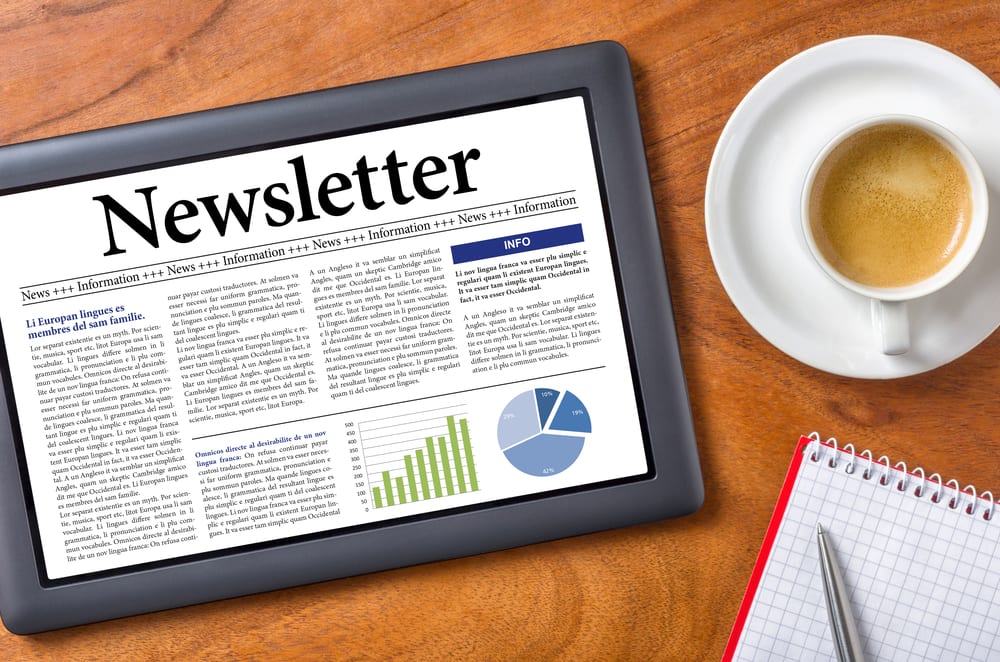This is a blog about needing a blog. Or wait. Should it be about needing a newsletter? Aren’t both valuable for difference reasons? Should you even be spending time on creating a blog or newsletter?
If you’re a business leader, this may sound familiar. Which one should you take on—a blog or newsletter? The answer is both.
Why? Because there are things you gain from a blog that you simply don’t get from a newsletter. Alternatively, there are benefits from a newsletter that may not translate in a blog.
Let’s look at it through another lens.
The medium is the message
We’re not saying you need a blog or a newsletter. We’re saying you need both. Because as Marshall McLuhan said in “Understanding Media: The Extensions of Man” in 1964, the medium is the message. It was published more than 50 years ago, but its content still rings true.
Here are some examples:-
The medium: An email from Netflix
The message: A message to Netflix subscribers highlighting its most recent company updates—more specifically, a price increase for monthly subscriptions
Now picture that full email on a highway billboard that you passed going 70mph. Silly, right? That’s the point. A full email blast placed on a billboard would indeed be silly. You wouldn’t be able to read any of the words from your car! The long-form announcement from Netflix (the message) would simply be lost and useless if placed on a high-rise billboard (the medium).
The medium: A billboard from Prudential
The message: A quick one-liner with the words “Bring your challenges,” encouraging people to share their biggest retirement challenges so Prudential can help them prepare for retirement
Now try picturing that single headline emailed to you, and that’s that. The email contains no other context—just that one line from the billboard. Probably wouldn’t make sense, right?
The medium is the message, which means that your content will translate differently through each format and should be written with its respective medium in mind. So, while there are similarities between the two, having both a blog and a newsletter is extremely valuable.
Read on to discover some additional benefits of each.
Why a blog?
#1. Authority
A blog is a cost-effective solution that helps establish authority in the eyes of your target consumer. A blog serves as a hub for content, and thus a voice for the brand.
A stream of quality blog content keeps brands at the top of the conversation and answers questions/creates solutions for prospects before they even hit the learn more button.
#2. Traffic/analytics
A blog is easy to manage these days, which is possible through hosting services such as WordPress and Squarespace. These sites not only offer a platform to host blogs/websites; they offer built-in tracking and analytics—another key benefit to blogs.
Measuring blog traffic is crucial for understanding who is visiting your site, when and why. Insight into your audience means potential leads and, in the long run, increased sales.
#3. Leads
Each blog post creates a new indexed page and, therefore, another tab that lives on your site and in search—something you don’t get with a traditional newsletter delivered through email. So every curated blog post is an opportunity to create a new lead, which means increased traffic.
Just ensure that blog posts include a strong call to action (e.g., download a free trial) if you want to capitalize on those leads.
#1. Staying in touch
Staying top-of-mind with current and prospective clients is crucial. How can a brand stay in touch regularly, and not sporadically?
The answer is a newsletter. Businesses can manage a newsletter through sites such as MailChimp—again, in the same cost-effective manner as owning a blog. As opposed to a blog, which is often more detailed and curated, newsletters are a quick-and-dirty way to remind (or update) clients on what your business is up to. So when an assignment comes along, you’ll be at the top of clients’ inboxes and the first partner they consider.
#2. Right time, right place
Newsletters can include a variety of content: articles, agency updates, new business information, competitive info and more. But your main objective for having a newsletter should be well thought through before one is created.
Quick-hit, relevant, quality content can add value for the client, which means increased trust, brand awareness and expertise. Brand awareness solves for one of the pitfalls of today’s hiring culture: we’re too busy to search for the best, most high-quality information. People trust brands to deliver content to their inboxes when and how they want it, at the right time and in the right place.
#3. Leads
While blogs and newsletters both generate leads, the way a business gets those leads differs greatly.
Leads don’t just arise from brand new, prospective clients. They also come from existing clients—ones that have already worked with your business, but may not have had a project (until now). A newsletter helps keep your business in touch with previous clients, reminding them that you’re available and ready for that project.
Sign me up
If you’re considering a blog against a newsletter, consider both. Both have valuable qualities that will enhance your company’s communications strategy.
It’s okay if the two work together—why not feature some of your company’s blog posts in your newsletter? (In fact, you should definitely be doing this).
In Understanding Media, McLuhan quotes General David Sarnoff, honorary degree holder from Notre Dame, who says, “The products of science are not in themselves good or bad; it is the way they are used that determines their value” (source: MIT.edu).
It’s the way that blogs and newsletters are used that determine their worth. Whether you choose a blog or newsletter (ideally both), a killer strategy for staying in touch is key. You always want to be on your customers’ minds, even when you aren’t there. A blog and newsletter ensure that and are definitely worth the time and investment.


